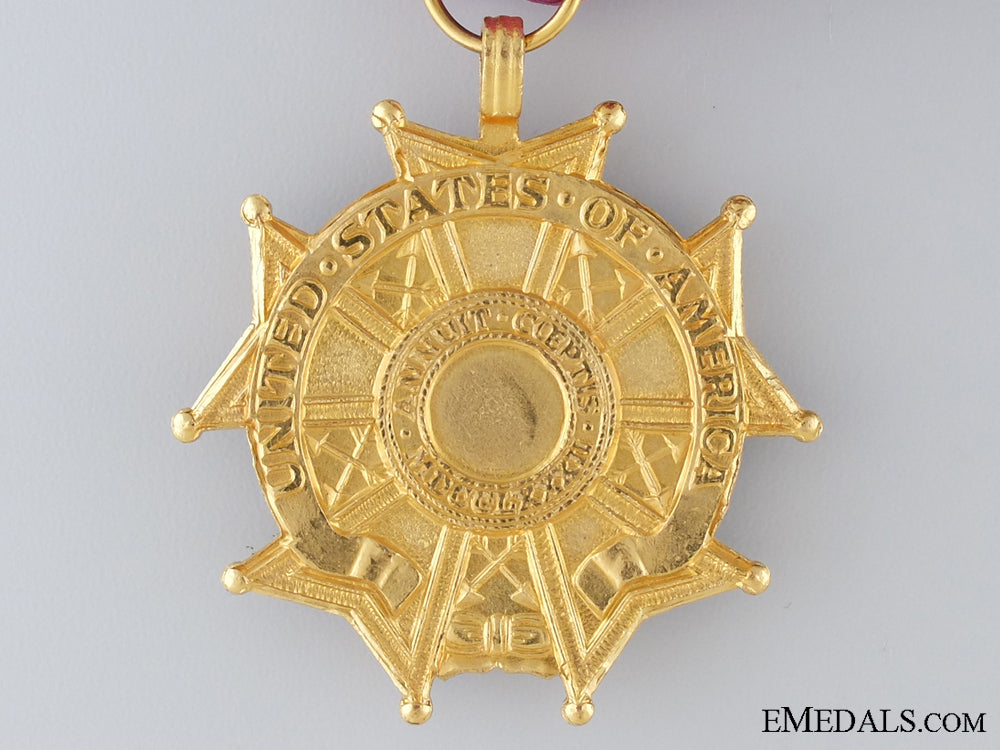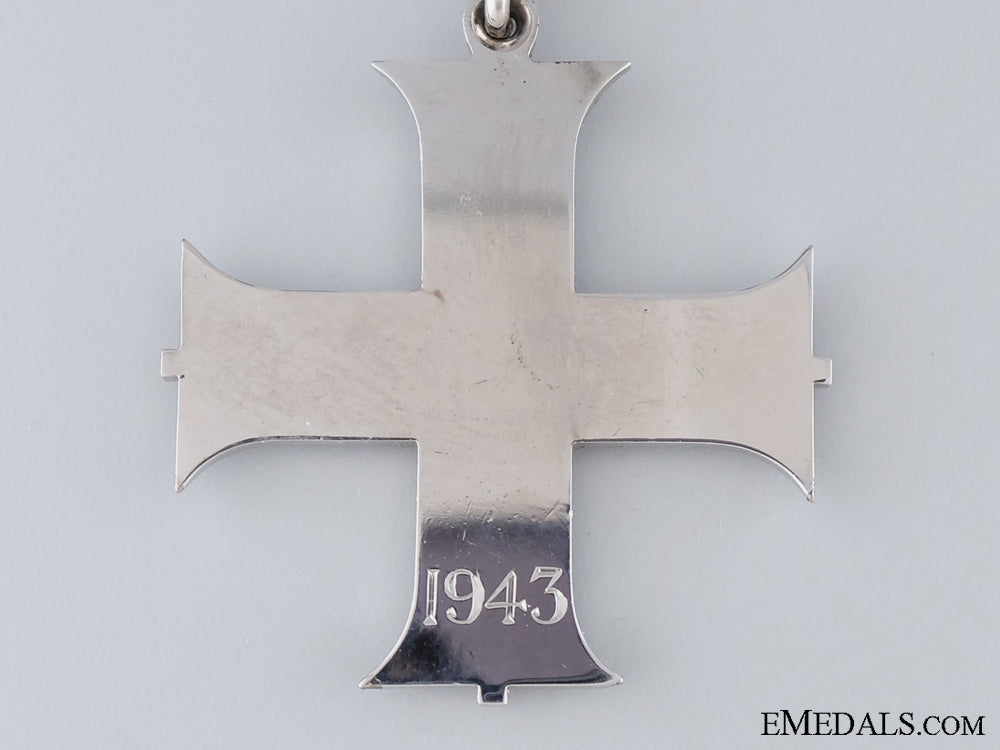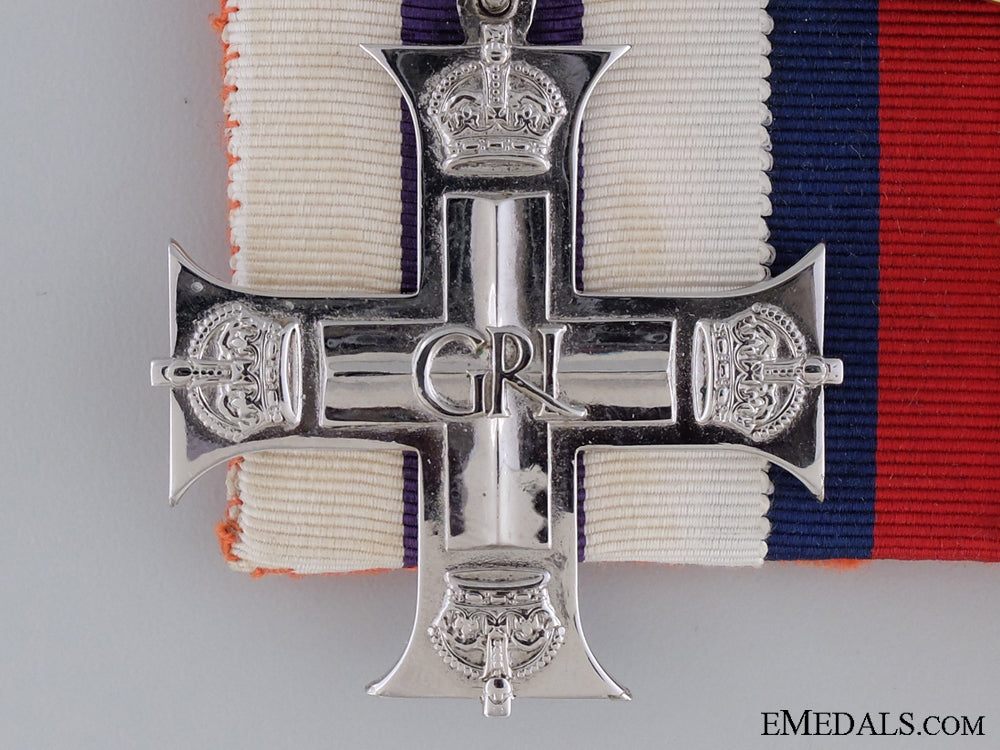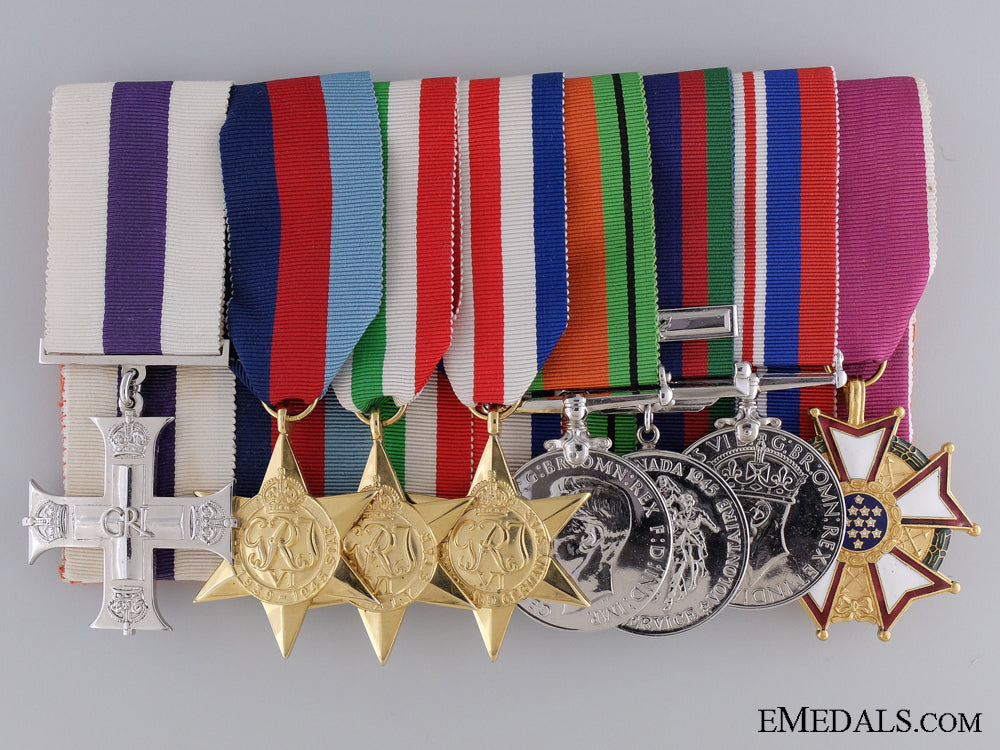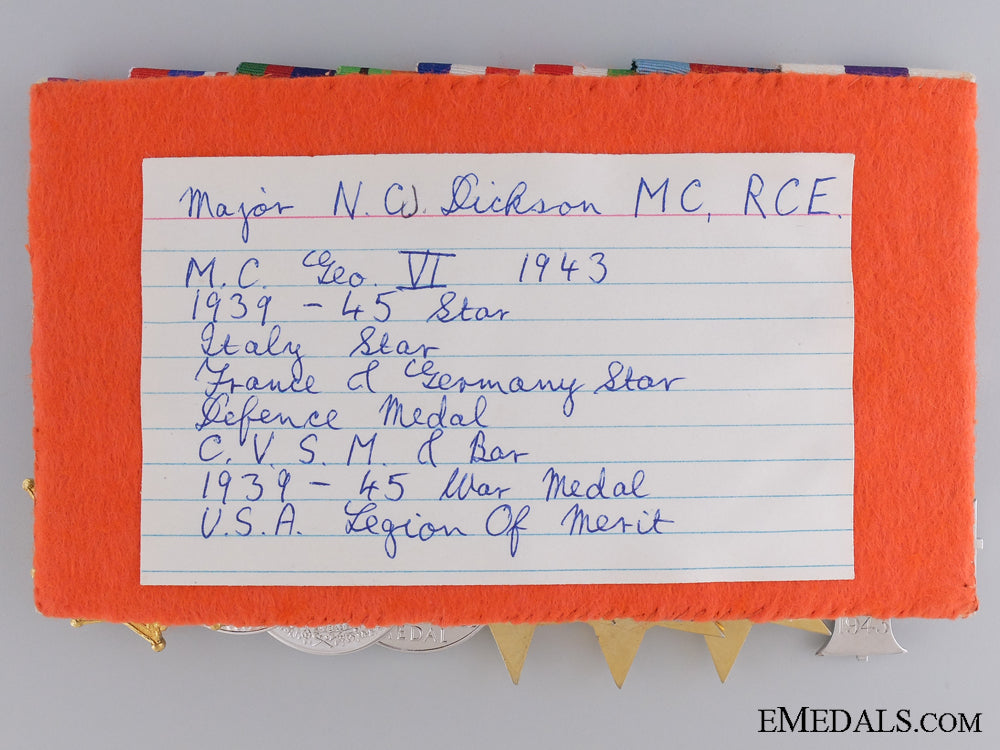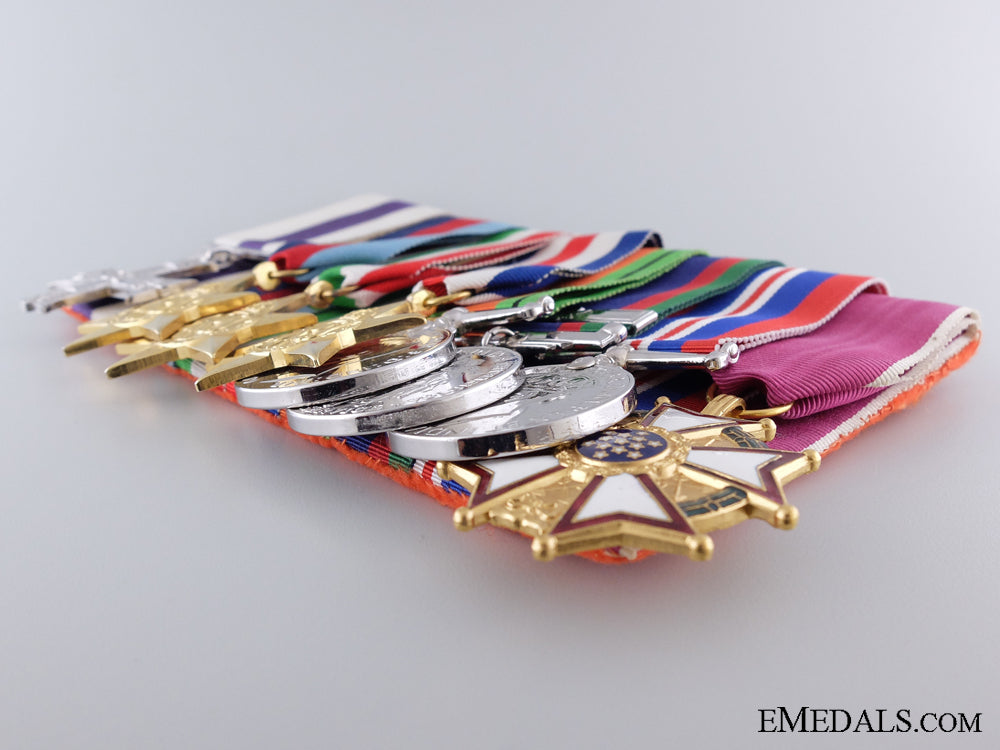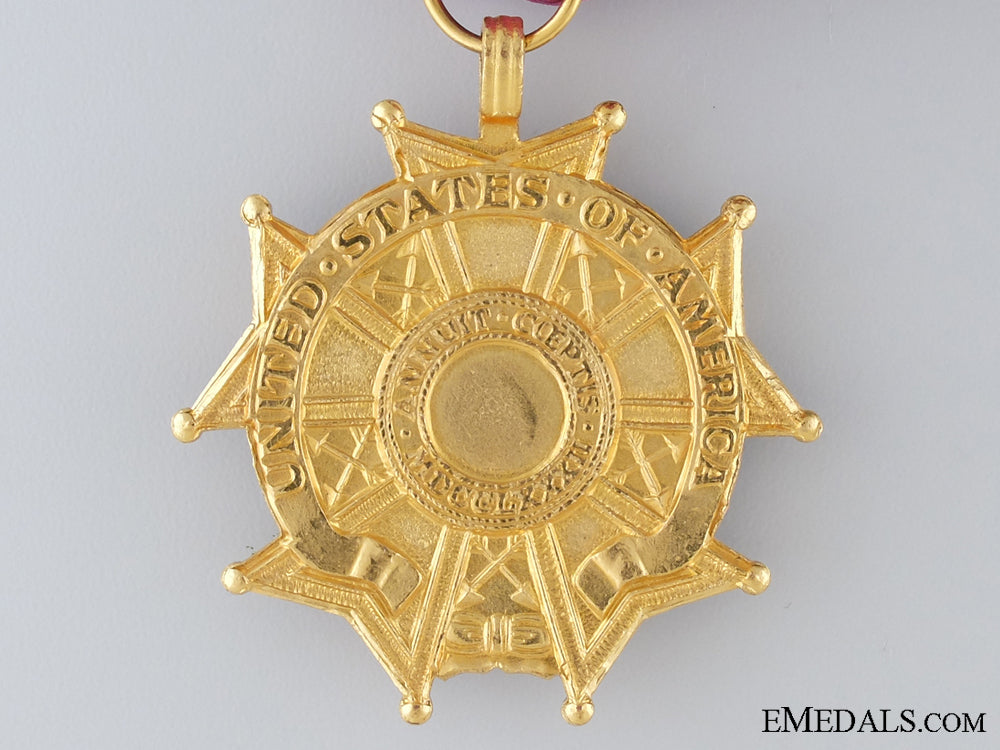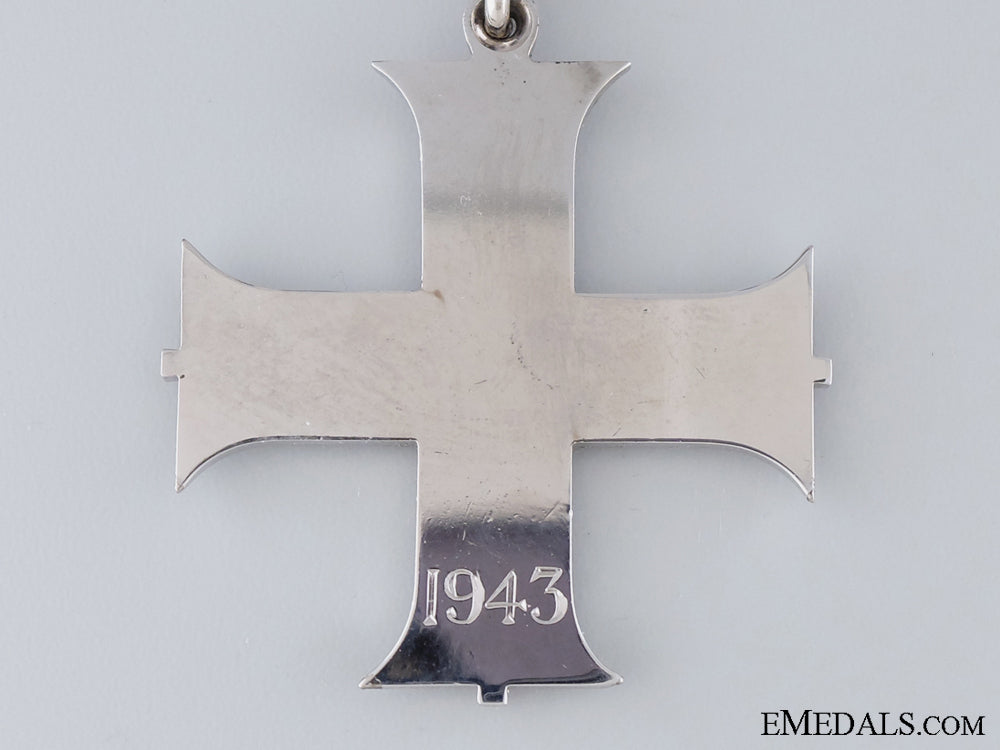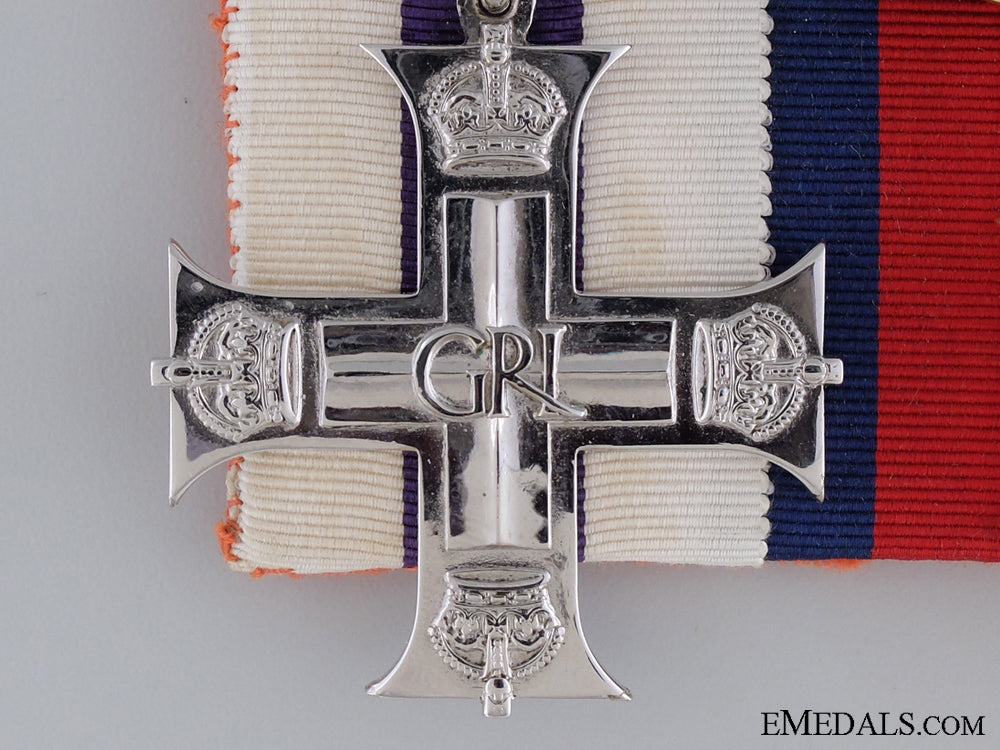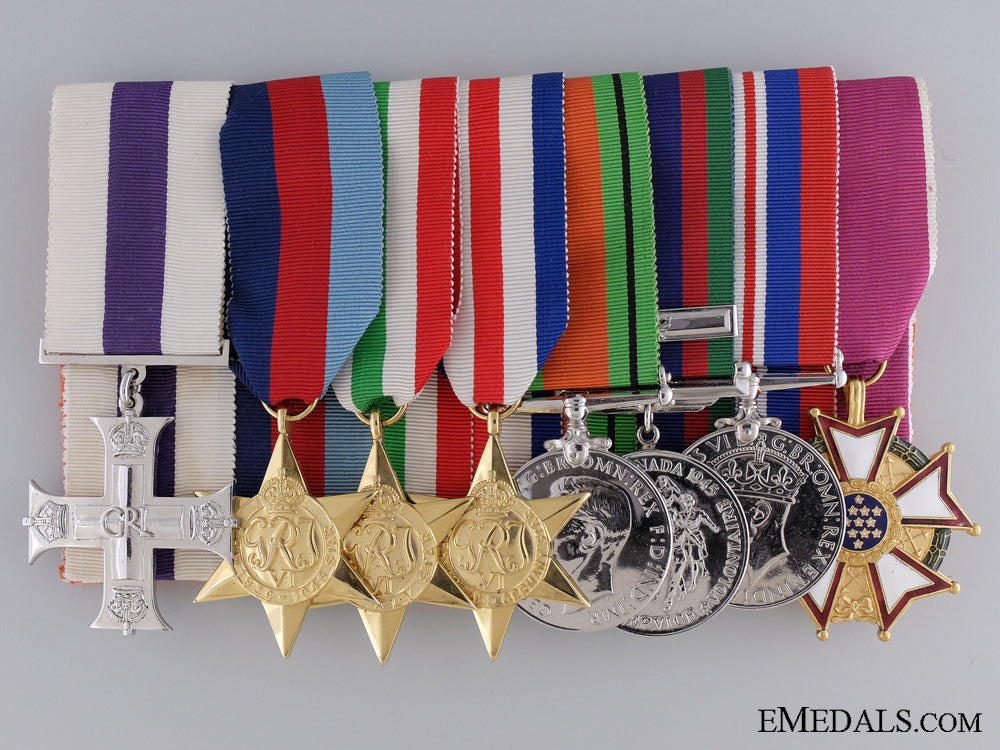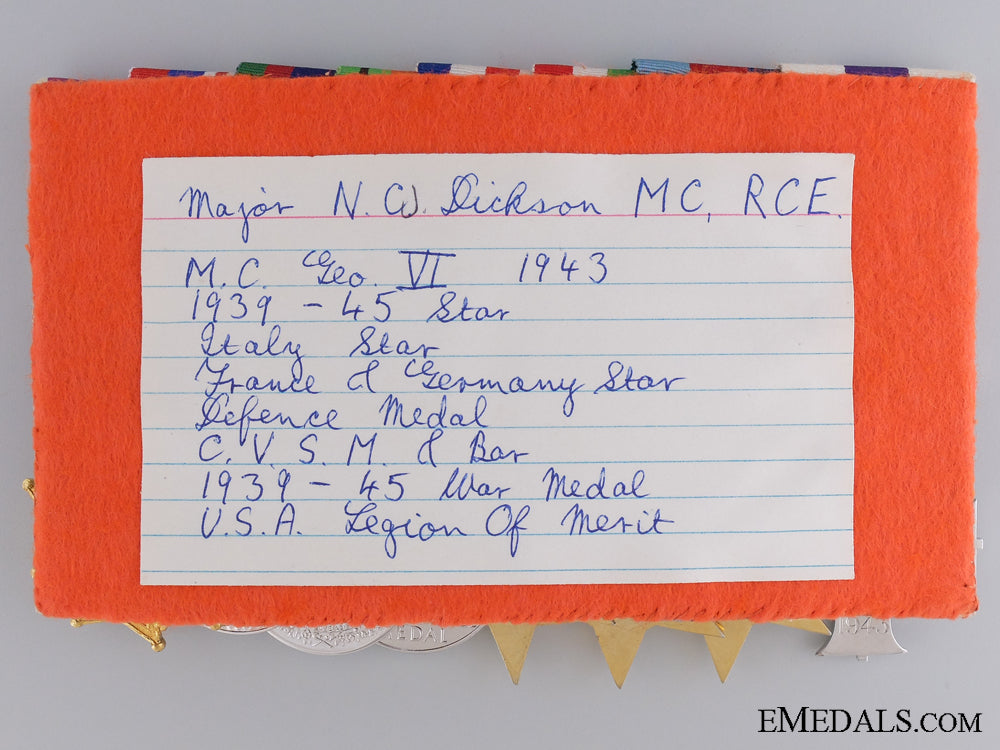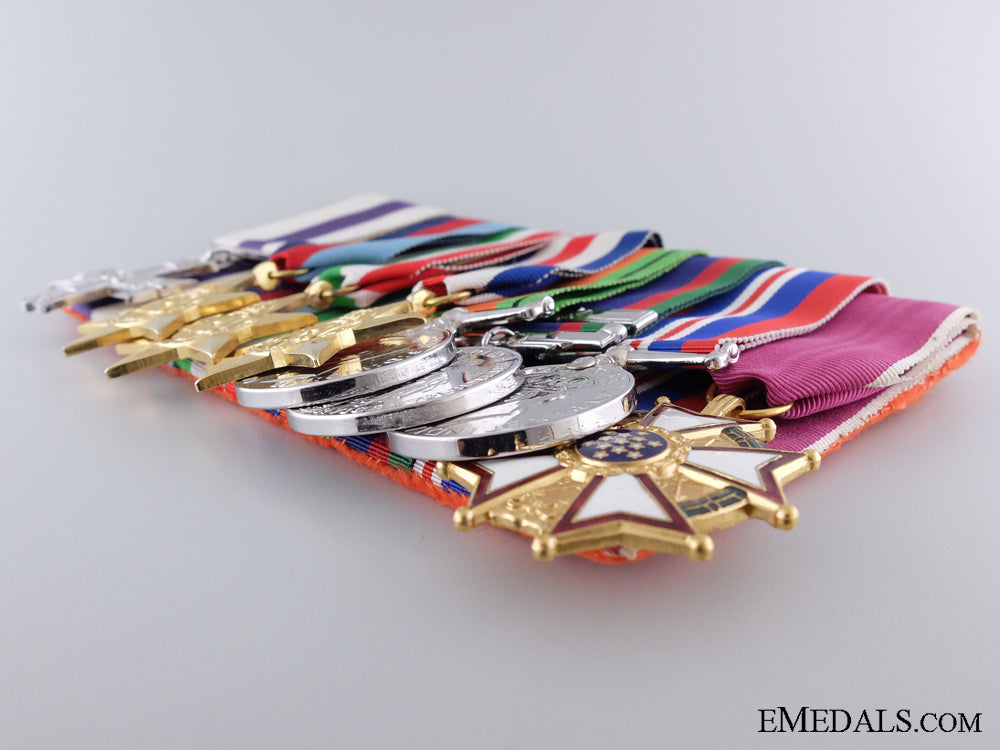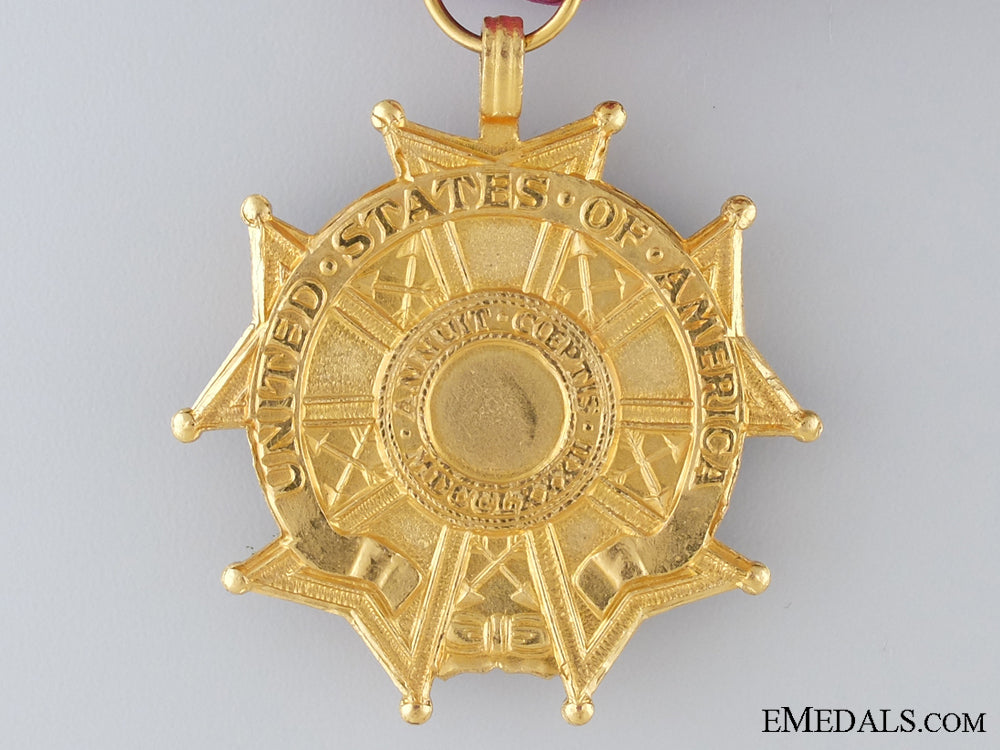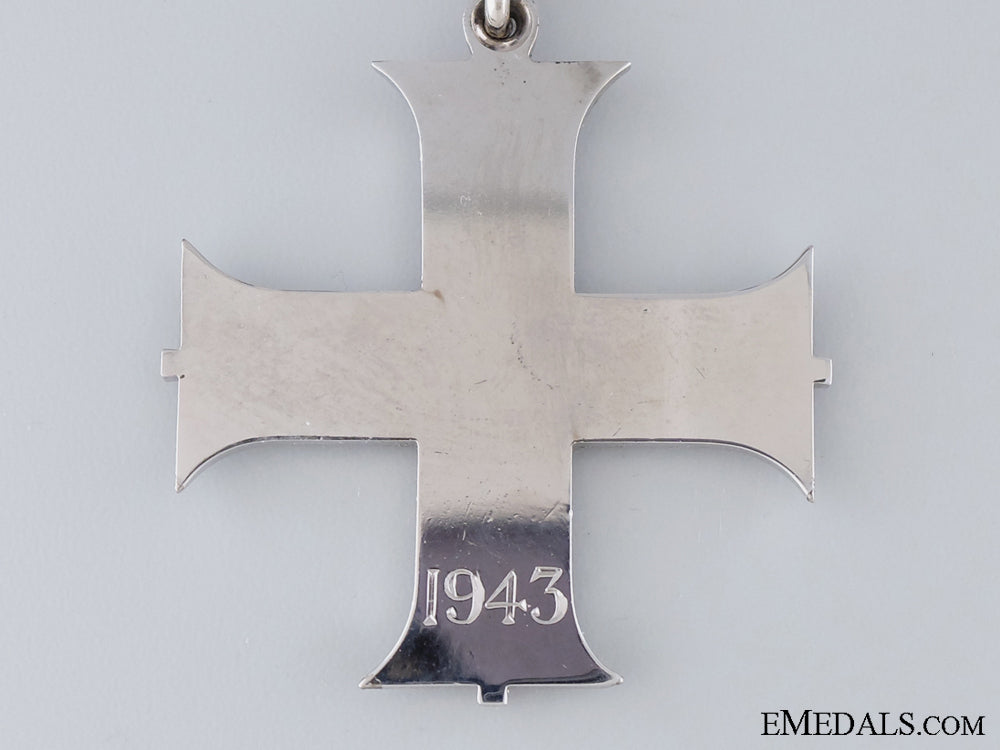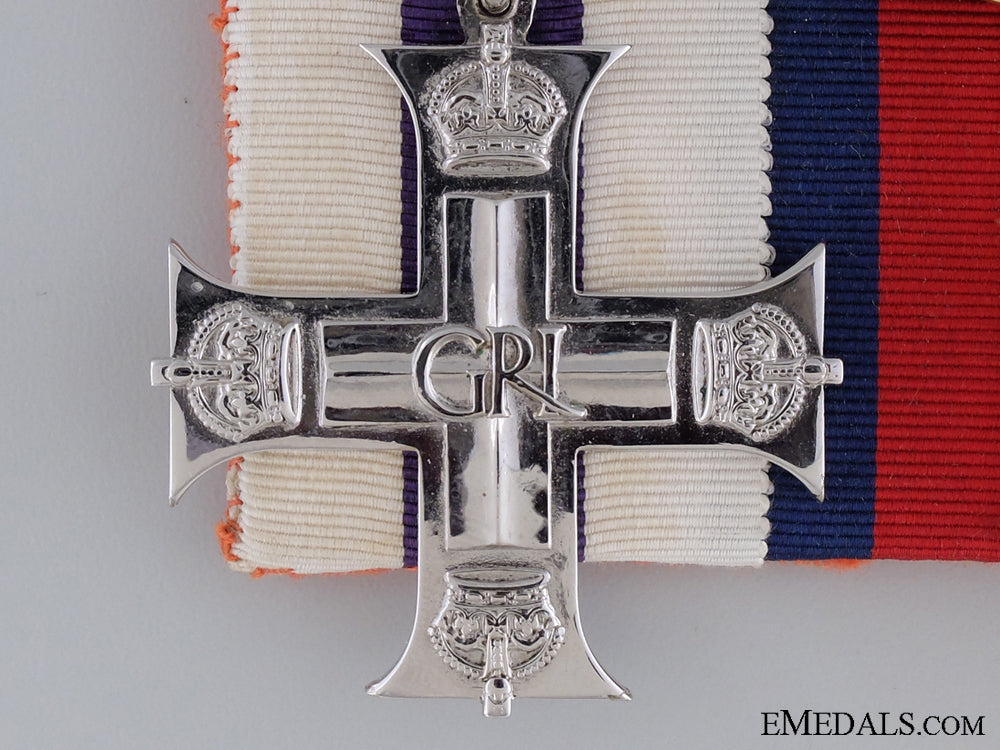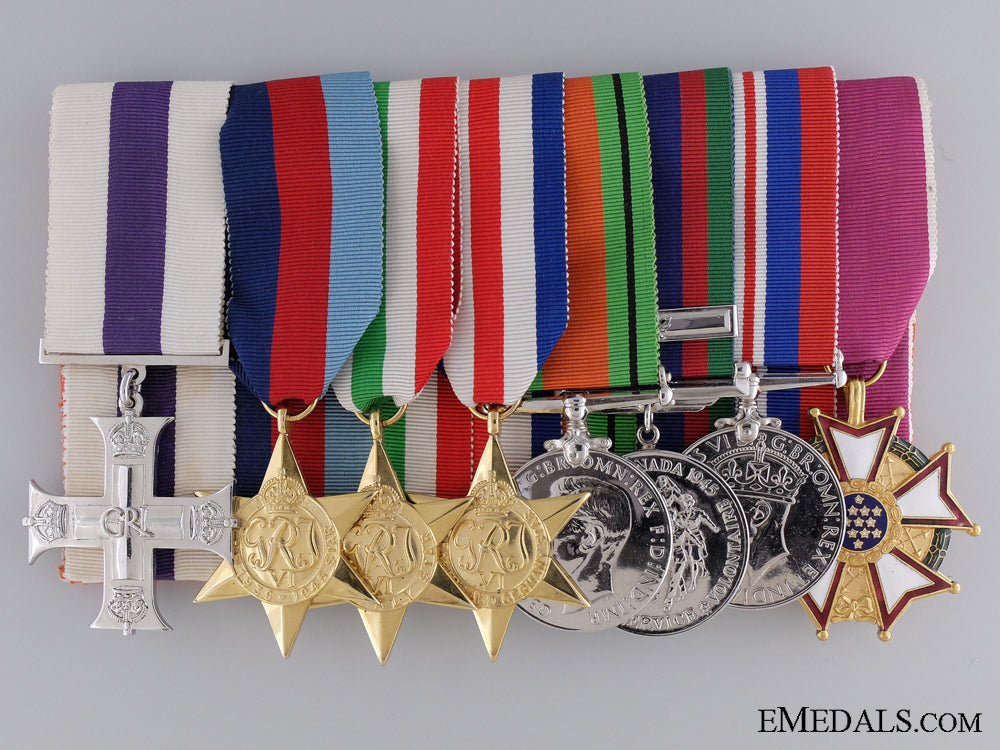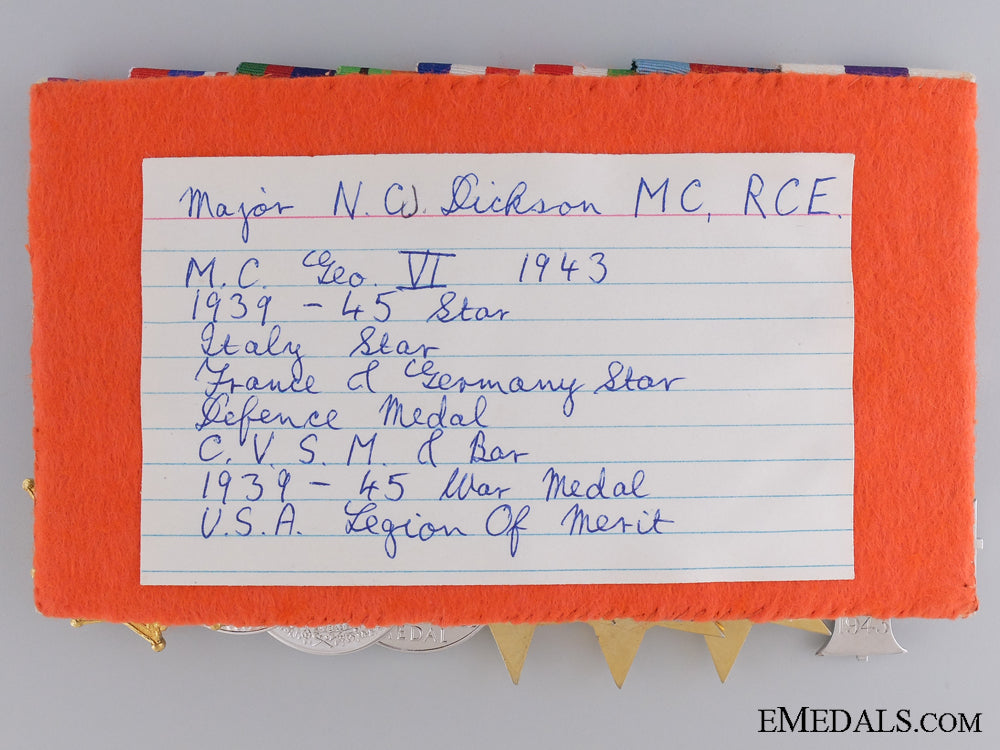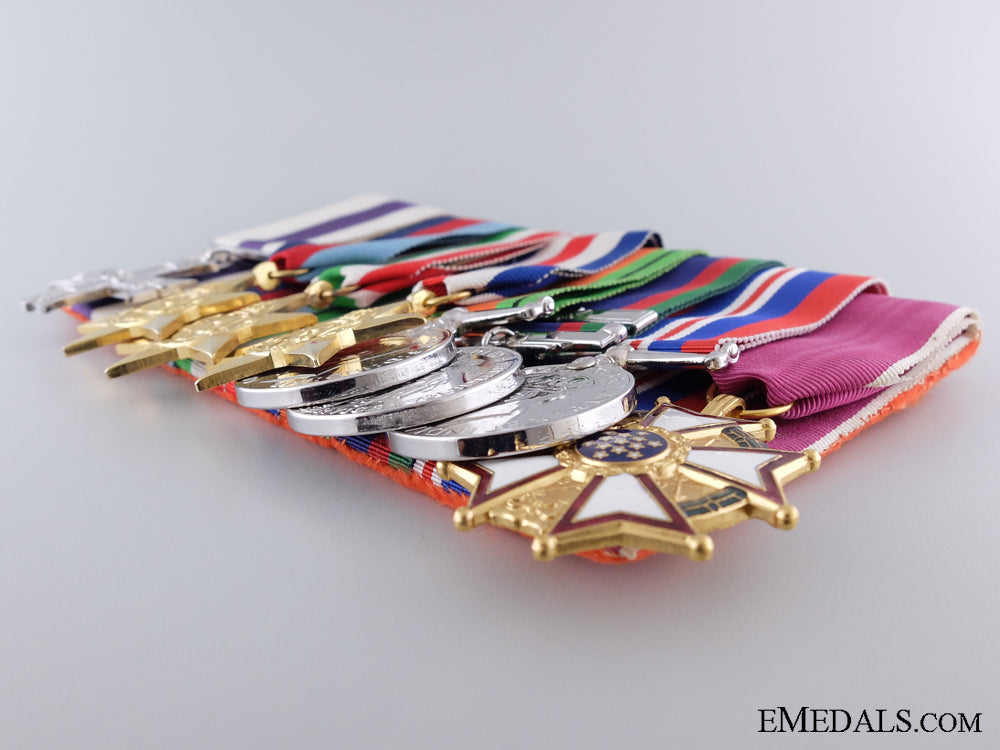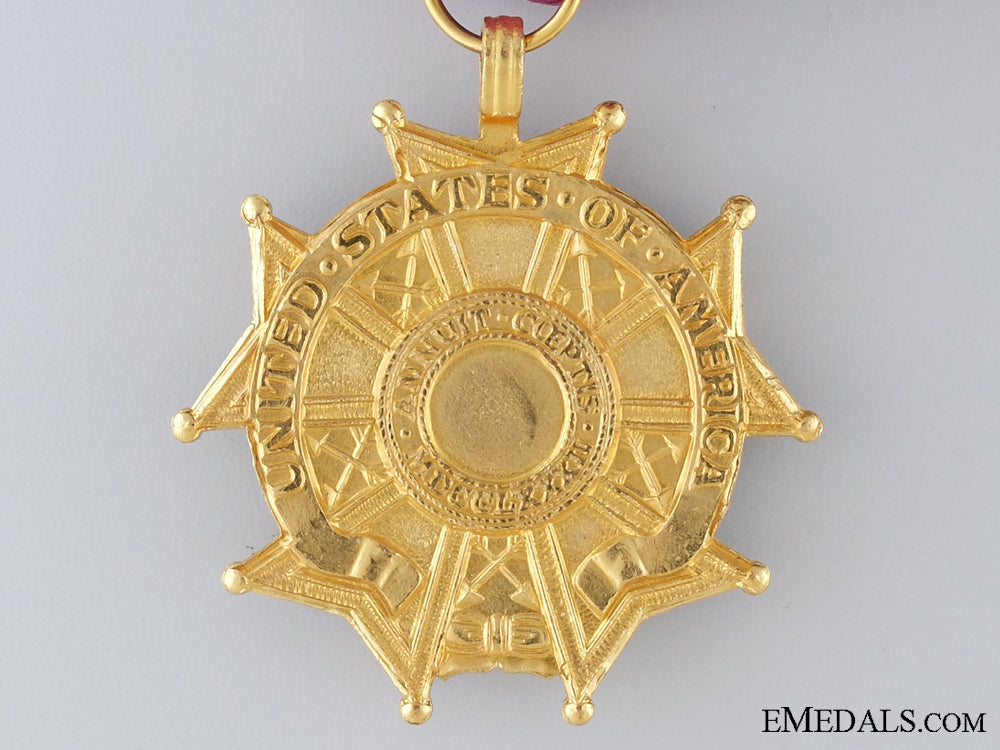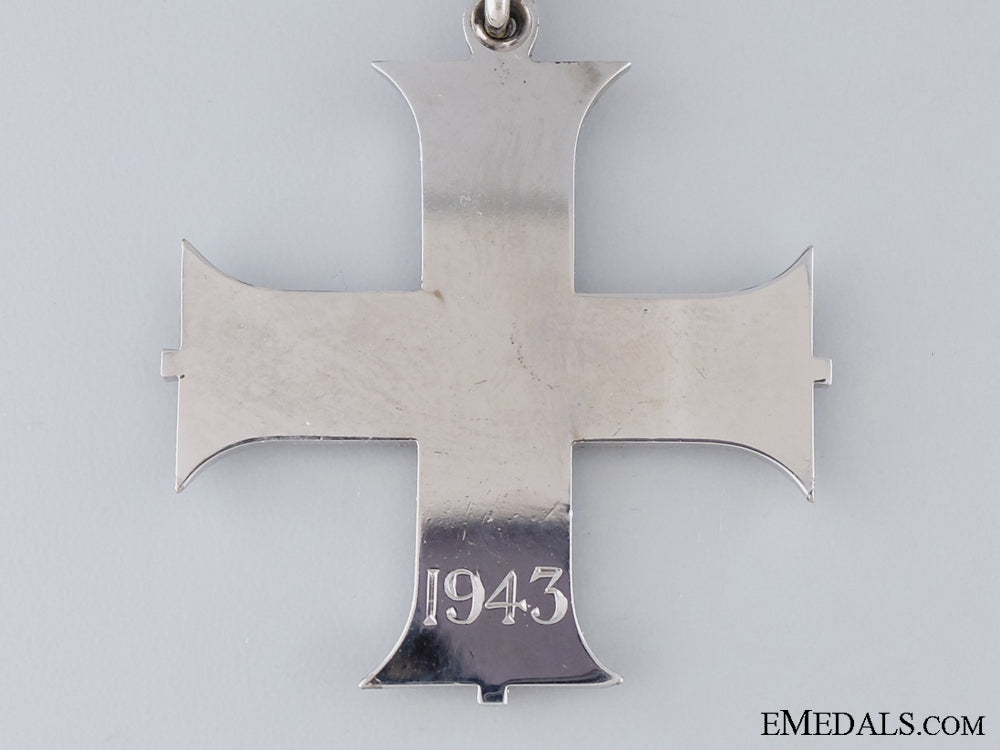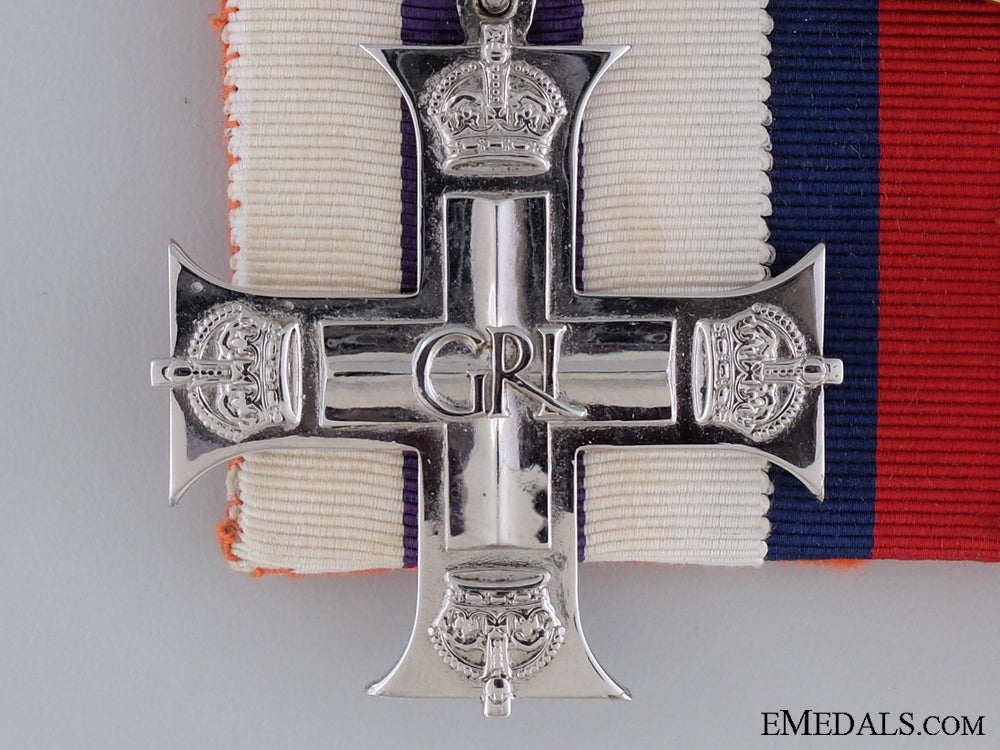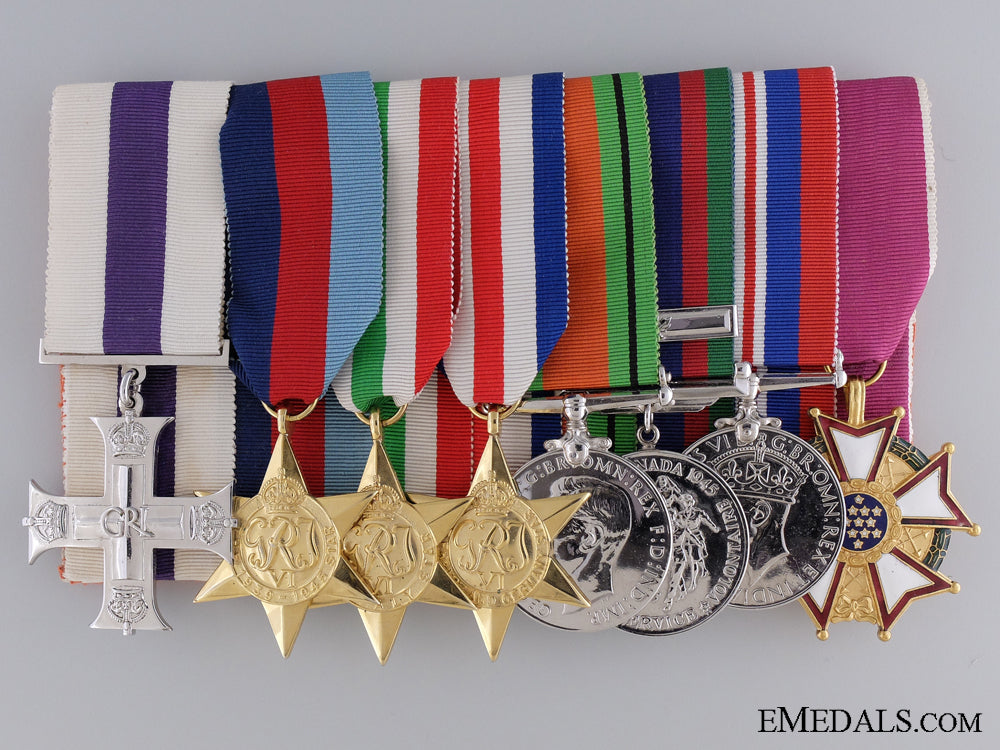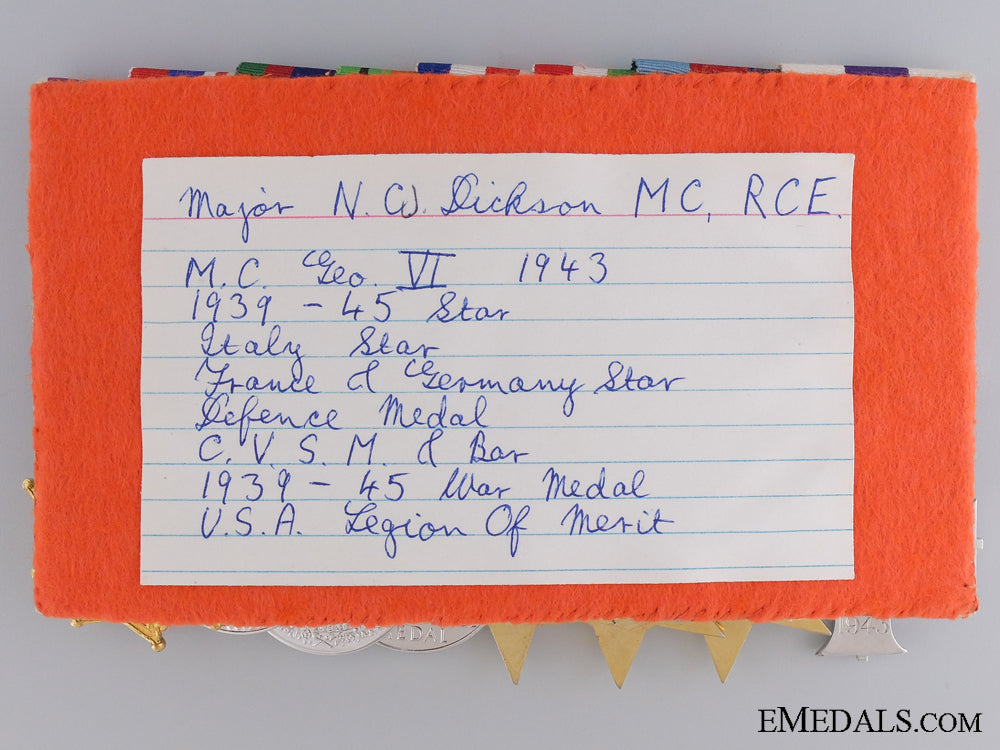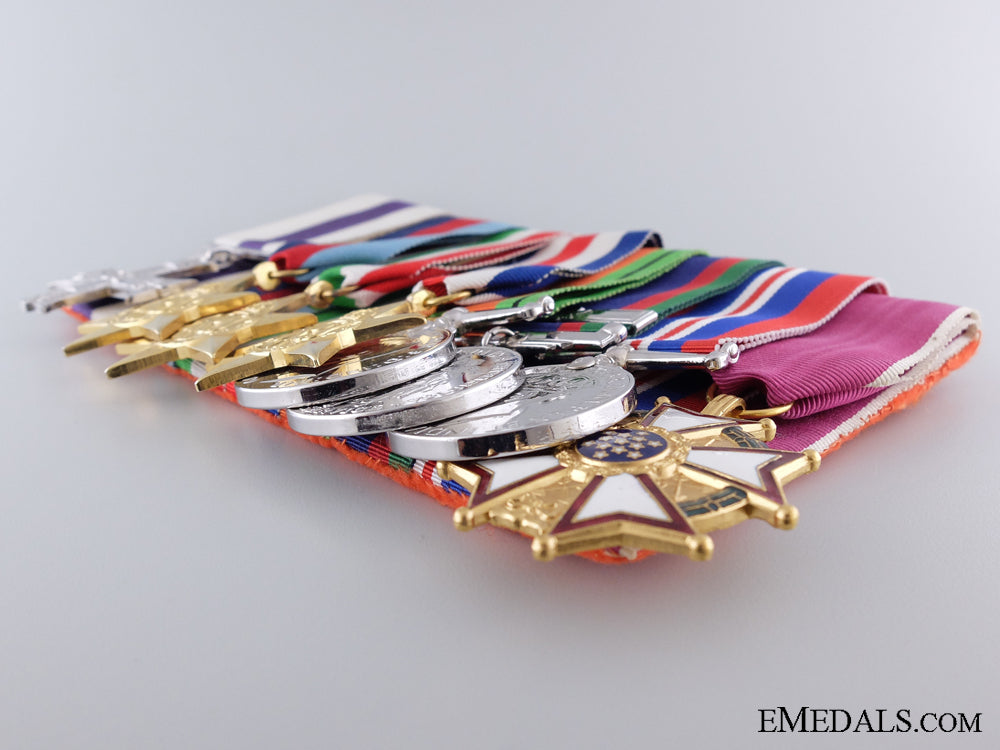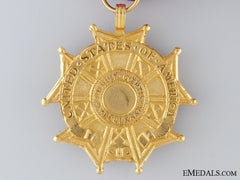Description
Military Cross, George VI GRI (dated 1943 on the reverse); 1939-1945 Star; Italy Star; France and Germany Star; Defence Medal; Canadian Volunteer Service Medal with Overseas Bar; War Medal 1939-1945; and United States: Legion of Merit, Officer Grade. Court-mounted, all but the U.S. medal were plated by the veteran, original ribbons, identifying card pasted to the reverse, extremely fine. Accompanied by copies of his Attestation Paper, Service Records, Canadian Army Particulars of Active Service, Department of Veterans Affairs Death Notification, Ontario Provincial Police Report and various letters and correspondence.
Footnote: Neil Wallace Dickson was born on January 25, 1907 in Manitou, Manitoba. He completed secondary schooling at Manitou in 1922, which was followed by his completion of three years of Civil Engineering at the University of Manitoba but he was unable to complete his degree as he ran into financial difficulties. He attended the Canadian Officer Training Corps from 1923 to 1925 and was a member of a Geodetic Survey Team in 1925. Dickson was employed with Hollinger Consolidated from 1925 to 1933, first as a Surveyor, then as Assistant Manager. He signed his Non-Permanent Active Militia of Canada Attestation Paper on June 11, 1930, naming his next-of-kin as his father, William Wallace Dickson of Manitou, stating that he had one years' previous military service with the Manitoba Mounted Rifles from June 1927 to July 1928, that he was Single and that his trade was that of Mechanic. He attended Annual Training at Camp Hughes from June 30 to July 11, 1930 and was struck off strength on December 23, 1931. He returned to civilian life, first taking a position as a Mine Superintendent in 1934, before doing Geological Survey work for mining interests from 1935 to 1936. Dickson seems to have run afoul of the Ontario Provincial Police, Haileybury Detachment, facing charges in relations to his state of drunkenness, which caused him to forge cheques. The incidents occurred on December 15, 1934 and November 26, 1935 and he plead guilty to all charges. He was employed as an Underground Superintendent of a Mine from 1936 to 1937, and later as an Underground Superintendent for Jellicoe Mines in Geralton, Ontario, from 1937 to his enlistment in 1939. Dickson enlisted with the Royal Canadian Engineers on September 15, 1939 at Winnipeg, Manitoba, naming his next-of-kin as his mother, Mrs. Bella Dickson of Winnipeg and stating his trade as that of Surveyor and Miner. He trained as a Sapper and proceed overseas in June 1940 in the rank of Sergeant. Following a stint with the Officer Training Corps, he was commissioned as a 2nd Lieutenant in December 1941, then as a Lieutenant in January 1942, while serving with the 3rd Tunnelling Company, of which he became second in command and promoted to Captain. He is on record as having been with the Royal Canadian Engineers, No. 1 Engineers Holding Unit in April 1941, and later, the Royal Canadian Engineers, 12th Field Company and as having attended the Bomb Disposal Course at Canadian Military Headquarters in 1943. Dickson was awarded the Military Cross as a Lieutenant, at the age of 36, as mentioned in the Canada Gazette on September 25, 1943 and CARO/3791 on November 6, 1943, for service with 3 Canadian Field Company, for operations in Sicily. He was recommended for an immediate award by Lieutenant-Colonel G. Walsh, Chief Royal Engineer, 1 Canadian Infantry Division and supported by Major-General G.G. Simonds, General Officer Commanding 1 Canadian Infantry Division. He was with Headquarters, 30 Corps (July 31 to August 1, 1943) where he was supported by Lieutenant-General O.W.H. Leese; with Headquarters, 8th Army (August 3 to 6, 1943); and with 15 Army Group Headquarters (August 7 to September 7, 1943). His Military Cross citation reads as follows: "During the night 21/22 July 1943 this officer was in charge of a detachment of engineers ordered to carry out a bridging operation south of Leonforte, Sicily. On arrival the site was found to be under direct enemy fire. Lieutenant Dickson carried on with his duties with complete disregard for his own safety, setting by his personal bravery an example to his men of courage and devotion to duty of the highest order." He was repatriated in March 1944 and posted to No. 1 District Depot in Winnipeg, then employed at National Defence Headquarters in Ottawa with the D.S.D.W. as a Technical Intelligence Officer. Dickson was posted to Washington, D.C. in the rank of Acting Major from January 1945 for duty as a Technical Intelligence and Liaison Officer, where he served until July 1946 in the United States War Department, Military Research Section. He was promoted to the rank of Major on September 24, 1945. In a report from Lieutenant-Colonel C.A. Krug in Washington, dated October 24, 1945, he stated that Dickson was "An intelligent officer, highly efficient and capable in the performance of his duties. His record with the U.S. War Dept is one which reflects credit on the Canadian Army." He went on to state that "His experience and training with the U.S. War Dept should make him increasingly useful as a Technical Intelligence Officer. I recommend this application for Continuing Service." Dickson was awarded the American Legion of Merit, Officer, as published in the Canada Gazette on June 8, 1946 and CARO/6619 on June 10, 1946, his citation stating "Major Neil W. Dickson, Royal Canadian Engineers, rendered meritorious service as a research analyst and intelligence officer, Military Intelligence Service, War Department General Staff from 1 January to 2 September 1945. In this capacity, he made substantial and valuable contributions to projects and publications on the subjects of engineer and chemical warfare equipment of the German and Japanese forces. Major Dickson's loyalty to the war effort and his unstinted service contributed notably toward a unified Allied Intelligence effort, and to the successful conclusion of the war." Dickson was recalled to National Defence Headquarters and appointed the Head of Technical Intelligence Branch, Deputy Minister of Intelligence, an appointment he held until October 1946, where he entered the Design Branch of the Royal Canadian Engineers. He is credited with having served in Canada, the United Kingdom, Continental Europe (France), the Central Mediterranean Area (Italy) and the United States during the Second World War. He was accepted for the Canadian Army (Active Force) on October 1, 1946 but was forced to retire on Medical Grounds, as he suffered from Asthma, Chronic Psoriasis, and Functional Dypepsia (chronic disorder of sensation and movement (peristalsis) in the upper digestive tract), with his "Resignation of Commission" coming on June 6, 1947. In his Department of Veterans Affairs Confidential Report, dated June 6, 1947 at No. 10 District Depot, in Winnipeg, his Army Counsellor, Major B.D. Jones noted that "This officer (Dickson) has demonstrated ability of high order which has been recognized by Military Authority both through promotion to Field rank and by the nature and responsibilities of appointments given him. Because of physical disabilities he now finds his hopes for a military career dashed, a fact which is a considerable shock to him." He went on to state that Dickson was not sure of what his future employment would be but something in the engineering field seemed applicable. He had experience as a surveyor and geologist with mining companies but his pre-service employers were no longer in business. However, Major Jones believed that there could be probable future developments in Northern Canada that might prove to be fruitful, allowing Dickson employment and using his appropriate skills and education. Dickson by this time was married to Lillian Barbara Dickson and they had one child between them. He died at Veteran's Hospital in Victoria, British Columbia, on November 22, 1972, at the age 65.

